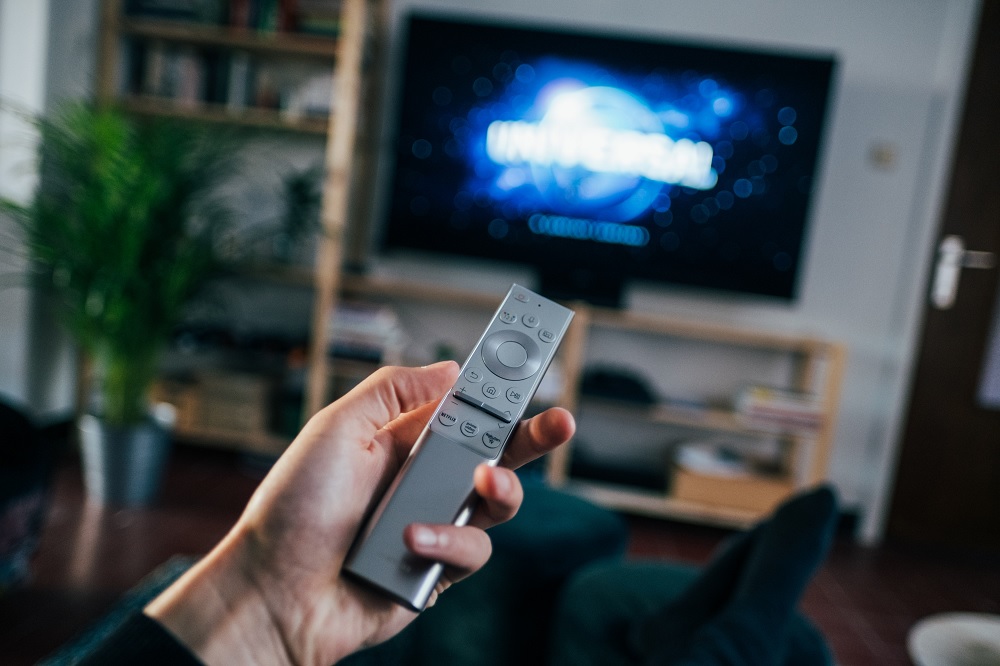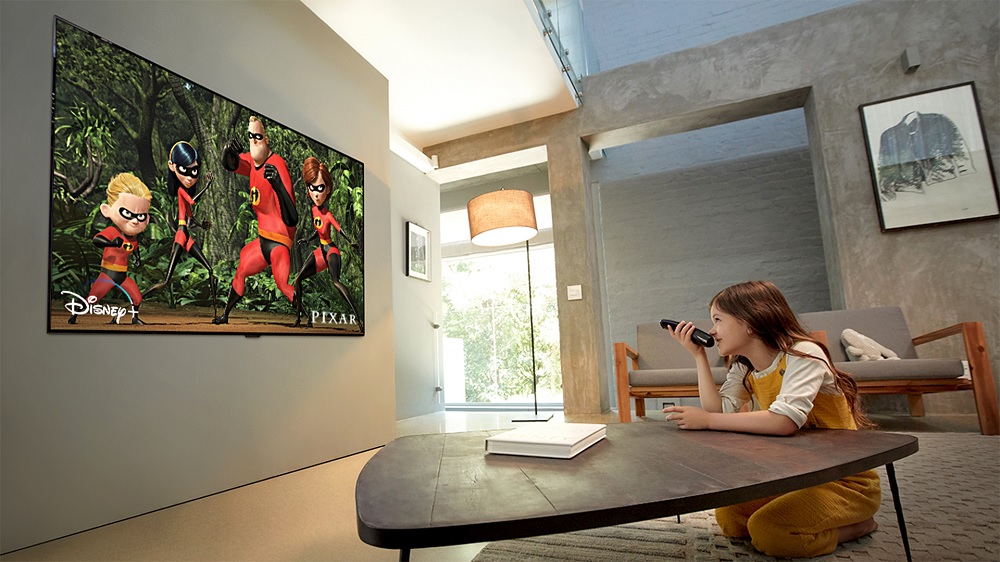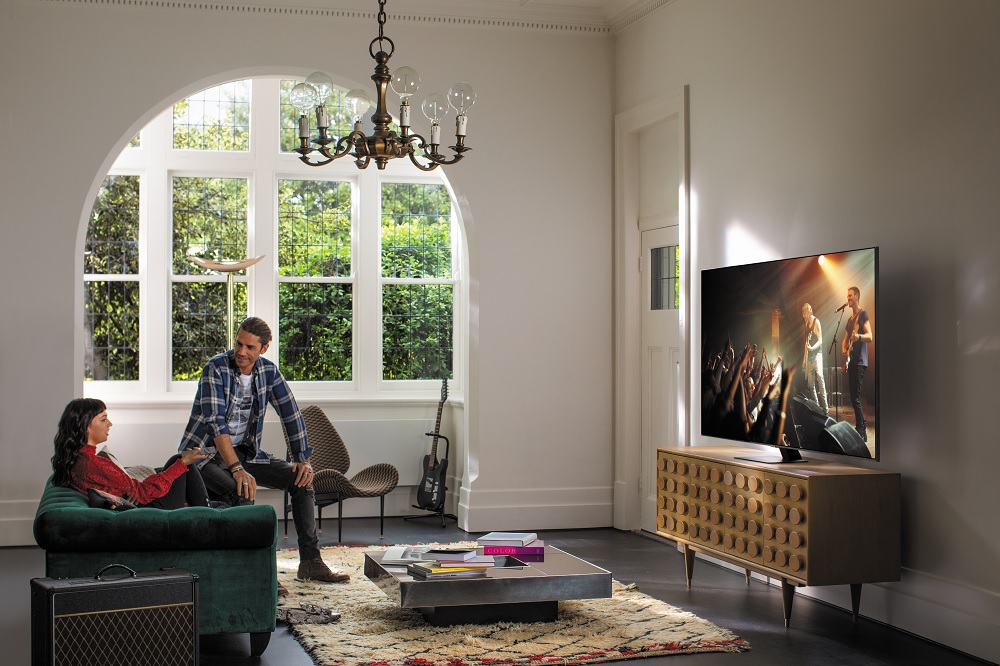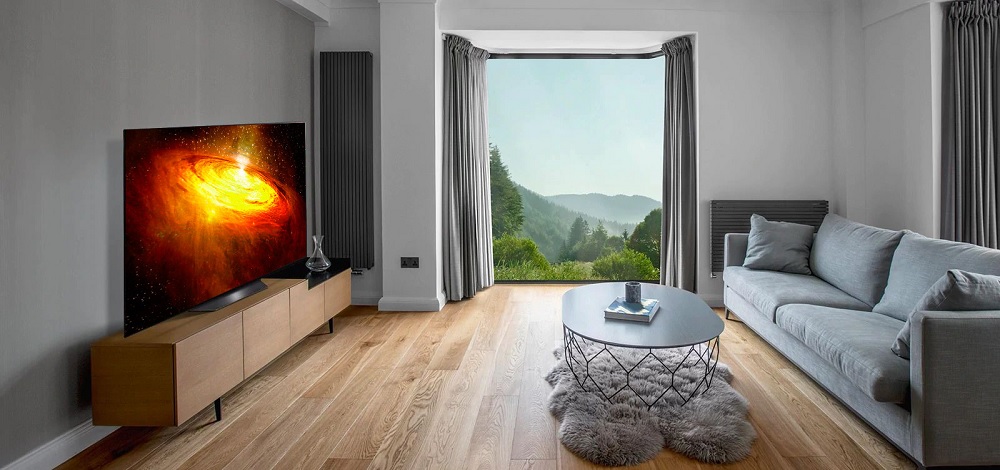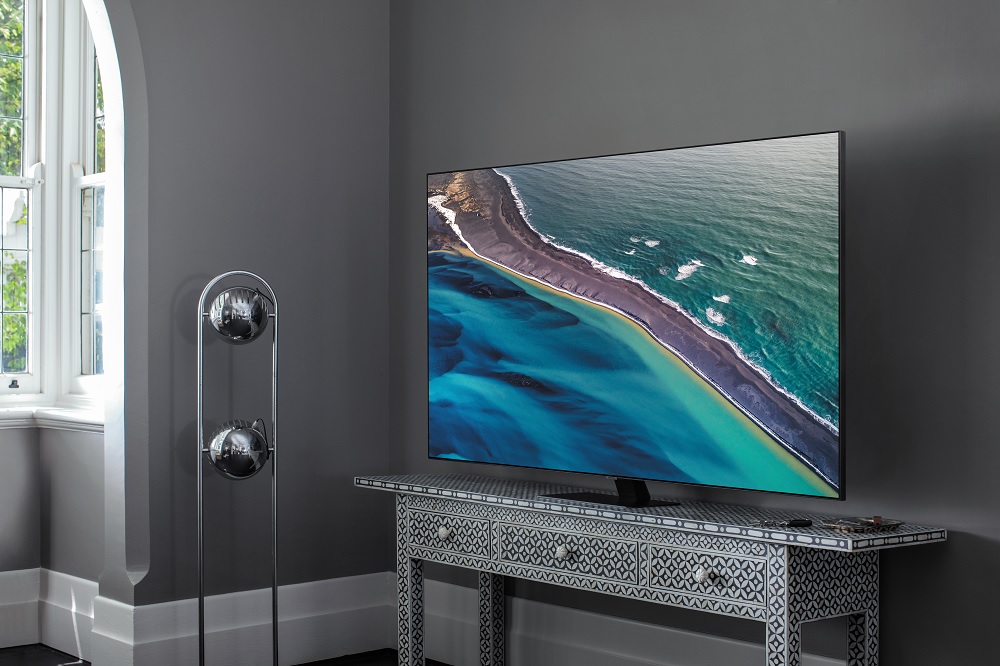It’s a matchup as classic as any that exists in our collective consciousness. Rocky vs. Drago. Tonya Harding vs. Nancy Kerrigan. The 1991 Eastern Conference finals’ Chicago Bulls vs. Detroit Pistons. Pancakes vs. waffles. Cats vs. Dogs.
Double threats in the appliance and electronics sectors, both brands continue to innovate, staying neck-and-neck in a seeming race to transform our home lives beyond recognition—and we couldn’t be more in awe.
Smart TVs in 4K Ultra HD have become the gold standard in modern home theaters, and LG and Samsung have not missed a beat, consistently releasing new models that display cutting-edge imagery and sound for the ultimate cinematic experience at home.
Discover how these industry titans battle it out as we revisit the LG vs. Samsung TVs debate. From high-contrast picture quality to handsfree navigation, your friends in the business at Spencer’s TV & Appliance have the lowdown on the must-have features from LG and Samsung TVs.
Brand Overviews: LG and Samsung
But first, let’s explore how each brand holds their own when it comes to manufacturing 4K Ultra HD television sets.
LG TVs
In recent years, LG has become synonymous with OLED, a distinct lighting technology that makes LG TVs exist in a league of their own. Let us explain.
Currently, LG is the leading brand behind OLED TVs, which use a fundamentally different technology than that of most TV sets on the market. Compared to the ever-popular LED TVs that overwhelmingly account for the bulk in electronics catalogs, OLED sets do not rely on an LED backlight and are often regarded as “self-lighting” TVs—hence their name, which stands for “organic light emitting diode.”
OLED lighting is uniquely emissive (as opposed to transmissive), with over 8.3 million subpixels independently emitting their own light to create a stunning picture that allows you to see virtually every detail.
Aside from the sharp picture brought to you by OLED, LG TVs also offer the latest gaming features and tech to give you an edge with less lag and high refresh rates in addition to smooth and responsive gameplay. Speaking of smooth, OLED Motion handles fast movements in sports and action sequences with less stuttering to slow down the most exhilarating moments—from drag-racing scenes in The Fast in the Furious movies to game-winning touchdowns made by the Arizona Cardinals (there’s always next season). In short, OLED Motion is technology you can see but hardly notice.
And if you are all about a streamlined appearance, LG OLED technology unlocks a new world of TV design. Say goodbye to jutted-out back panels. Without a need for LED backlights, LG TVs’ impossibly thin profile puts the spotlight on your content while complementing your home’s minimalist interior.
Fun fact: While other familiar brands, like Panasonic, Philips, and Vizio, distribute OLED sets, these brands all use panels manufactured by LG Display.
Samsung TVs
Not to be outdone, Samsung TVs flood the market with heightened color volume and immersive surround sound. Batting for LED TVs, Samsung ups the ante with Quantum Dot technology, marketing it as its own hallmark feature. OLED: Meet QLED.
Seen as a variation of LED LCD, QLED is a transmissive form of lighting that relies on an LED backlight, but QLED TVs distinguish themselves by having a quantum dot film. The light from the LED backlight hits these microscopic dots and then travels through other layers inside the QLED TV, including an LCD layer, to compose the hard-hitting action on the screen.
In the end, Samsung QLED TVs deliver 100% Color Volume without washing out any level of brightness. In other words, how does over a billion true-to-life shades of color sound to you? Step up to a dazzling world of color that lets you enjoy bursting images in upscaled, incredible clarity.
What’s more, Samsung QLED TVs have Direct Full Array 12X, a precisely controlled backlight system that intelligently adjusts to improve contrast for deeper blacks and brighter whites. And with a powerful AI processor, many Samsung TVs automatically adjust the picture to deliver a more immersive 4K experience.
Adaptability is Samsung’s strong suit. With Adaptive Picture, your surroundings may change, but your picture stays perfect. Whether you’re in a sunlit living room or a darkened den, your Samsung TV responds to the lighting conditions around it to display an unwaveringly amazing picture.
And if you desire a big screen above anything else, Samsung QLED TVs are available in larger sizes compared to LG OLED sets.
At a Glance: LG vs. Samsung TVs
Now that we covered the basics of LG and Samsung TVs, we thought it would be a good idea to dissect their best-selling products from our catalog.
Before we deliver our in-depth conclusions about each TV, here is an overview of how the LG CX Class 4K Smart OLED TV and the Samsung Class Q80T QLED 4K UHD HDR Smart TV stack up:
| Product Features |
|
| |
|---|---|---|---|
| Available Screen Sizes | 48, 55, 65, 77 | 49, 55, 65, 75, 85 | |
| MSRP | $1,799-$4,999 | $1,99.99-$3,999.99 | |
| HDR? | 4K Ultra HD (3,840 x 2,160) | 4K Ultra HD (3,840 x 2,160) | |
| Refresh Rate (Hz) | 120 | 240 | |
| HDMI Inputs | 4 | 4 | |
| Smart Compatible? | Yes | Yes | |
| Bluetooth Capable? | Yes | Yes (ver. 4.2) | |
| Voice Assistants? | Yes; Amazon Alexa, Google Assistant, and Siri | Yes; Amazon Alexa, Google Assistant, and Bixby | |
| Gaming Features | VRR (Variable Refresh Rate), G-SYNC Compatible, FreeSync™, ALLM (Auto Low Latency Mode), and HGiG | Real Game Enhancer+ | |
| Speaker System | 2.2 Channel | 2.2 Channel | |
| Dolby Atmos? | Yes | Yes | |
LG CX Class 4K Smart OLED TV
If you got the impression that OLED TVs sound like they work harder from our previous description, that’s because, in a way, they do. With LCD being the dominant technology behind the production of most flat-panel TVs, LED TVs (including Samsung QLED models) are more cost-effective to manufacture, making them the more affordable option compared to their OLED counterparts; however, in line with the heftier price tag, you get what you pay for with an LG OLED TV.
By virtue of their emissive lighting, LG OLED TVs are said to have better image contrast (boasting the deepest blacks and the brightest whites in the industry), enhanced screen uniformity (no dark patches!), and more viewing angles (so you can watch from your adjoining kitchen).
Furthermore, the LG CX Class 4K Smart OLED TV (OLED55CXPUA, OLED65CXPUA, and OLED77CXPUA) give you courtside seats to all the action. With Sports Alert, you can receive updates on Phoenix Suns basketball (Go, Devin Booker!), along with start times and live scores—even when you’re catching up on this season of The Bachelor.
And when it comes to watching movies, the LG CX Class 4K TV is Bluetooth-ready, allowing you to connect LG Bluetooth speakers for wireless surround sound. Not to mention: This LG TV allows you to reap the benefits of Dolby Atmos and Dolby Vision IQ. While the former immerses you with multi-dimensional surround sound, the latter automatically adjusts picture settings to drive the HDR format to new cinematic heights.
Samsung Class Q80T QLED 4K UHD HDR Smart TV
Compared to LG OLED TVs, this QLED set from Samsung boasts a brighter picture quality that very well rivals real-life beauty. The Samsung Class Q80T QLED 4K UHD HDR Smart TV (QN65Q80TAFXZ and QN75Q80TAFXZA) features Quantum HDR 12X that allows you to experience even deeper contrasts and improved brightness so you can enjoy more breathtaking detail in any environment. As a bonus, HDR10+ allows color and contrast to be adjusted scene by scene, delivering a rich, dynamic, and realistic picture that feels like it is jumping off the screen.
But don’t just take it from us. The CES 2020 Innovation Award Winner in the Gaming category, the Q80T combines the best features of Samsung's QLED lineup with innovations that optimize the gaming experience. Namely, this Samsung TV ensures smooth visuals while minimizing input lag to produce stunning graphics and responsive gameplay.
And if video games aren’t your thing, everyone can certainly appreciate pristine home audio for movies and TV. With the Object Tracking Sound feature, the Q80T lets you hear the action in every scene with audio that tracks every motion on the screen.
With dedicated up-firing and down-firing built-in speakers, you can experience vividly realistic 3D sound that pulls you in closer, making the hum of lightsabers and sounds of space warfare feel transplanted from science fiction and permeated into the soundscape of your reality.
Let Us Help You
Check out our catalog for amazing deals on LG and Samsung TVs. To learn how you can elevate your entertainment setup to a full 4K experience, be sure to call or visit your friends in the business at Spencer’s TV & Appliance!



